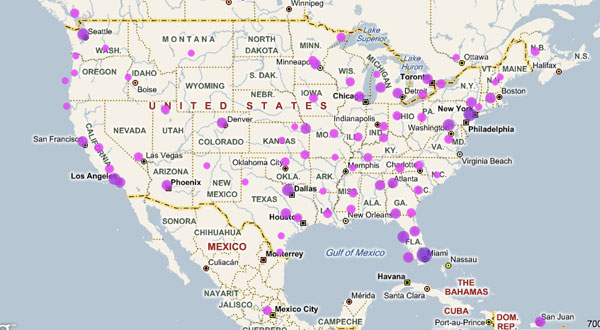Jun 7, 2011
Transform print ads into hard-selling multimedia presentations

GFLCVB | SFBJ
Republished from South Florida Business Journal
Some people call them QR codes, others scan tags. However, the category name is mobile barcodes – icons you can place in your print ads that will allow smartphone users to “scan” and view a video or a Web page on their device.
“There’s a ‘wow’ factor in being able to wave your phone over something like you would a magic wand and pick up a video or another page in cyberspace,” said Francine Mason, VP of communications with the Greater Fort Lauderdale Convention & Visitors Bureau.
However, in addition to the ‘wow,’ mobile barcodes are a tremendous convenience for a prospect that wants to know more about the intriguing message in a brochure or an ad, turning the selling opportunity to a multimedia presentation in split seconds.
Mason shows an example of how the mobile barcodes turn into entertaining videos in the Greater Fort Lauderdale Vacation Planner brochure on her BlackBerry. From baby turtles hatching on the beach to a world of butterflies or underwater scuba diving scenes, South Florida’s sunny lifestyle is revealed through a merger of printed pages and mobile device.
Another convenience factor: An advertiser can offer a viewer real-time content. So, if the barcode resides in a brochure or directory, the viewer sees updated content without needing to reprint the brochure.
All in all, mobile barcodes save time, money and create additional value for advertisers and the consumers they target.
Retailers can also find value in putting mobile barcodes on mall posters, bus benches, table tents or anyplace people may be waiting and have a few seconds to scan for more information.
There are many new ideas that will be designed to continually surprise prospects over the next year, as more and more marketers use these barcodes to increase the value and performance of their materials.
What is even more special is the opportunity to know where in the world the content is viewed. With mobile barcodes, analytics provide a world map which points out where and when the barcodes are being viewed. A brochure given out in New York City may find its way to Hong Kong. The old saying “all business is local” can now be matched with “all business is global.” Because of privacy laws, the analytics programs don’t report who was scanning, only where and what was being scanned.
“We attend international trade shows,” Mason says. “With mobile barcodes on our brochure pages, we can pinpoint where people are reading these, giving us good feedback on our brochure value and the value of specific trade shows for promoting greater Fort Lauderdale.”
The CVB has even put mobile barcodes in train stations in England, she said.
These hardworking barcodes are also very economical to use. Creating one multiplies the value of the ad or brochure by giving the promotion another dimension.
Mobile barcodes can be created for both color and black-and-white applications.
There are two major players in the mobile barcode space: Microsoft Tag and Quick Response (QR) codes. Both require users to first download an app on their smartphone.
The QR code is an open-source standard that allows anyone to make a code or code reader. While this is being adopted by government organizations and can have its advantages, it can also have disadvantages.
First, the code itself is only part of the equation. You need an app to read it. And because it’s open source, there are many apps out there – and some are not as reliable as others. We have found that if a user scans a barcode and it fails to read, they think it’s an issue with the barcode, even though it may be an issue with a poorly written app. Plus, for tracking and metrics with QR codes, a third-party system is required.
The Microsoft Tag has not been around as long as QR codes, so there is less adoption right now. However, since the technology is also newer, it is a 3-D color barcode.
Microsoft wrote app that reads its barcode, and there is only one app reader that has versions for all mobile devices. This makes it very easy for a user to try a barcode for the first time. (Go to gettag.mobi from any smartphone, and it will detect and present the appropriate download version for that phone). Microsoft includes a reporting suite that has all kinds of data and analytics, so third-party integration is not needed.
Microsoft will most likely be the easiest and most reliable choice for testing a mobile barcode campaign. Government contractors/vendors or companies, which currently have a system that integrates a QR code, may continue to choose QR.
Very much like Adobe Acrobat PDFs, the technology may eventually be adopted and added to all mobile operating systems.
The user who wants multimedia sales presentations at the fingertips of prospects everyday will find mobile barcoding a cost-effective option.
